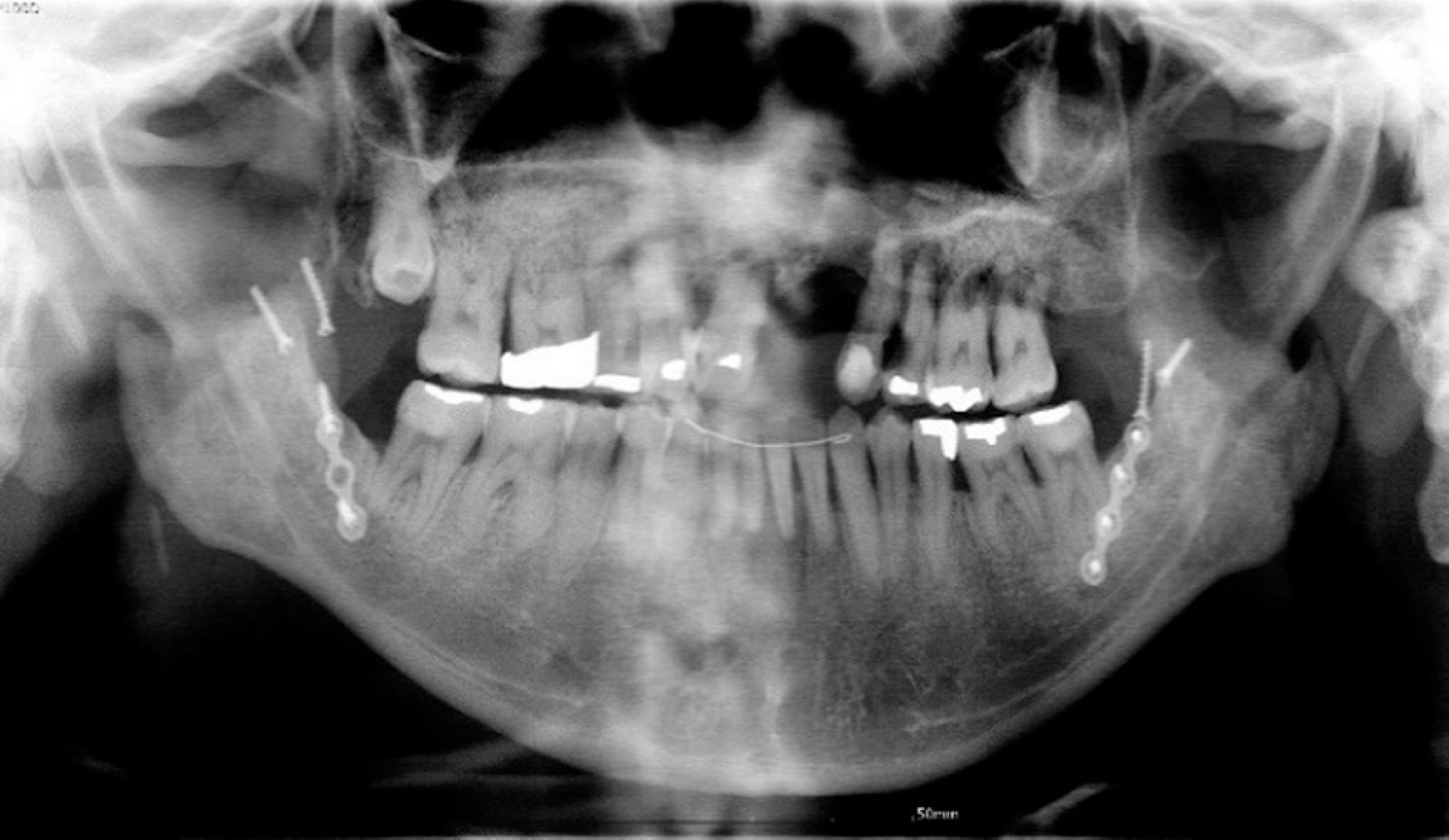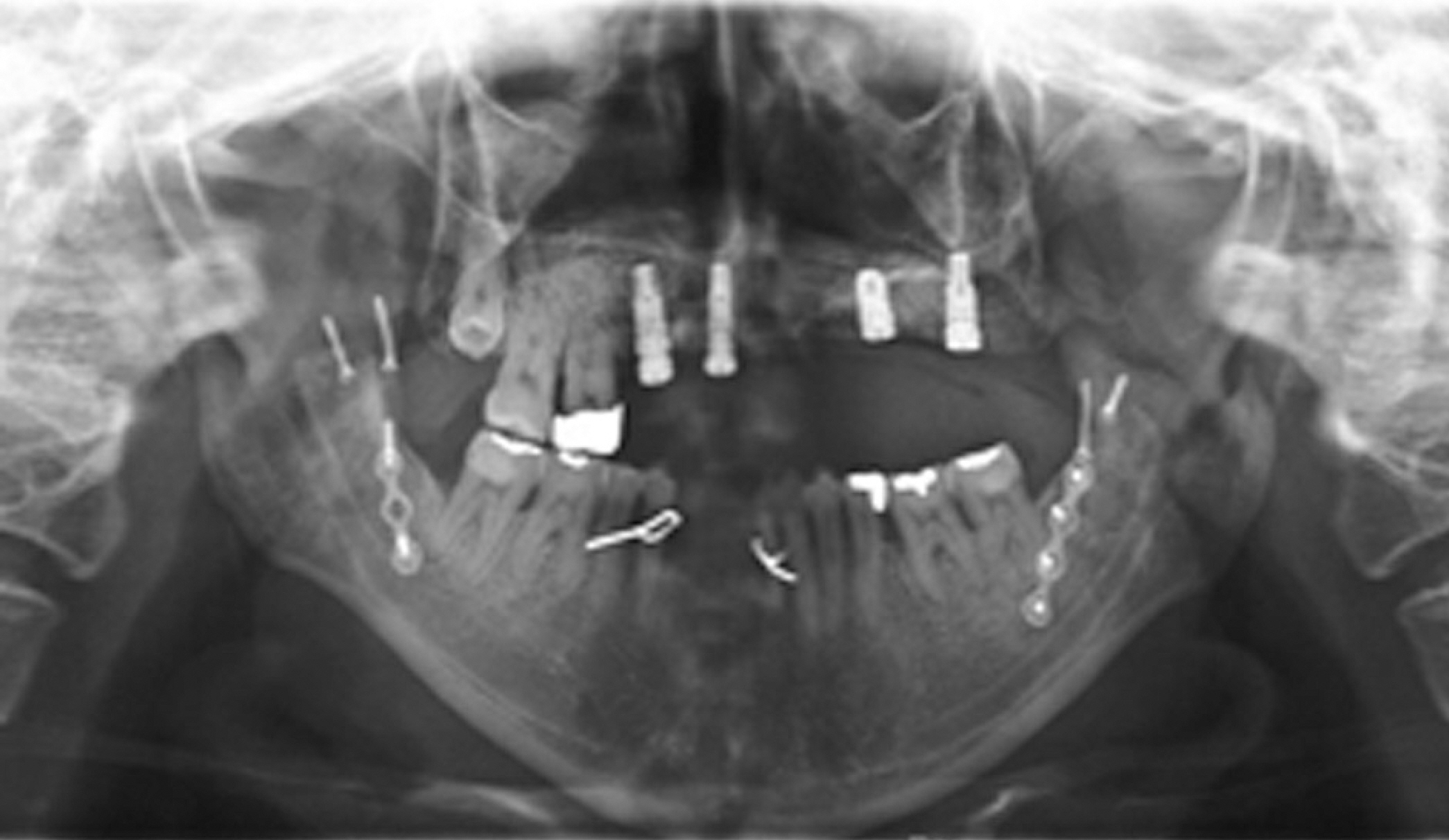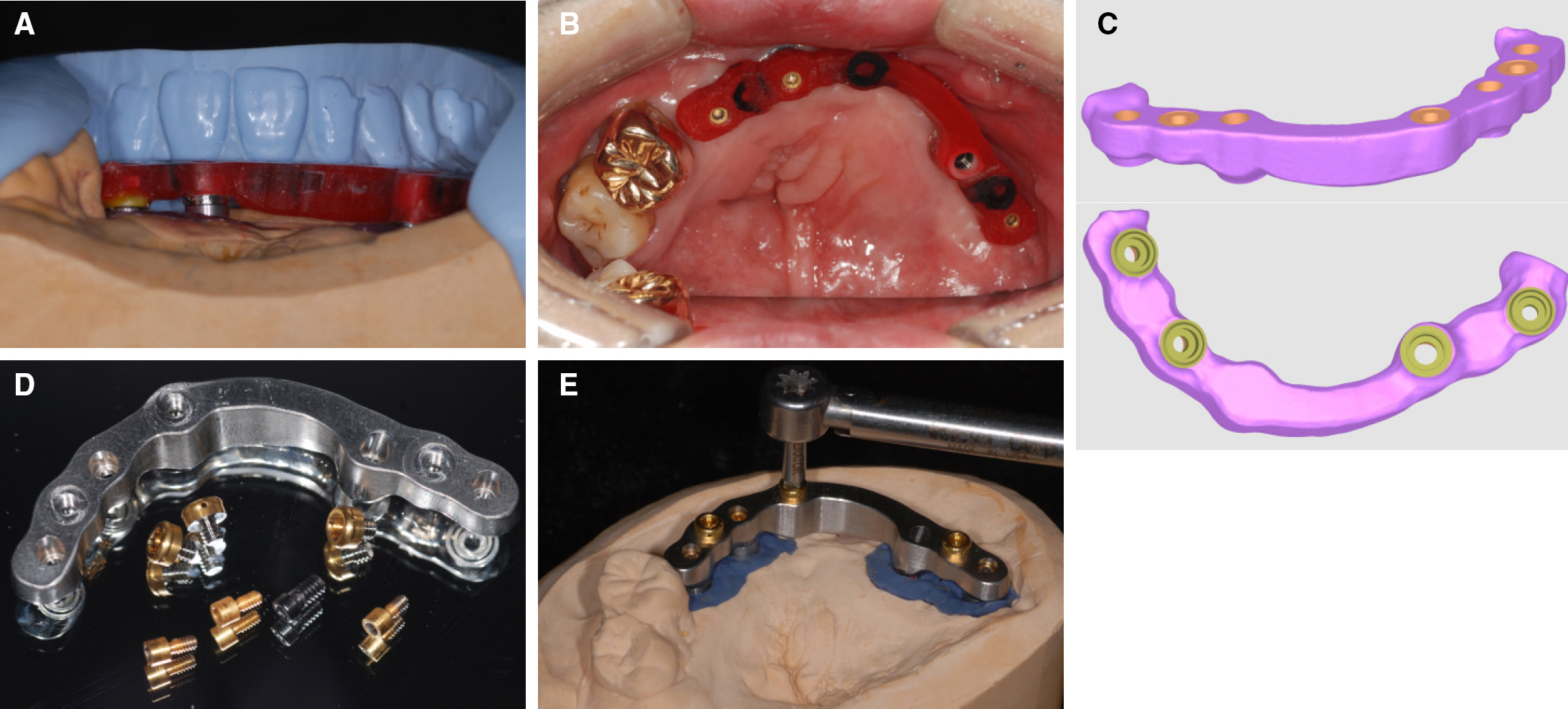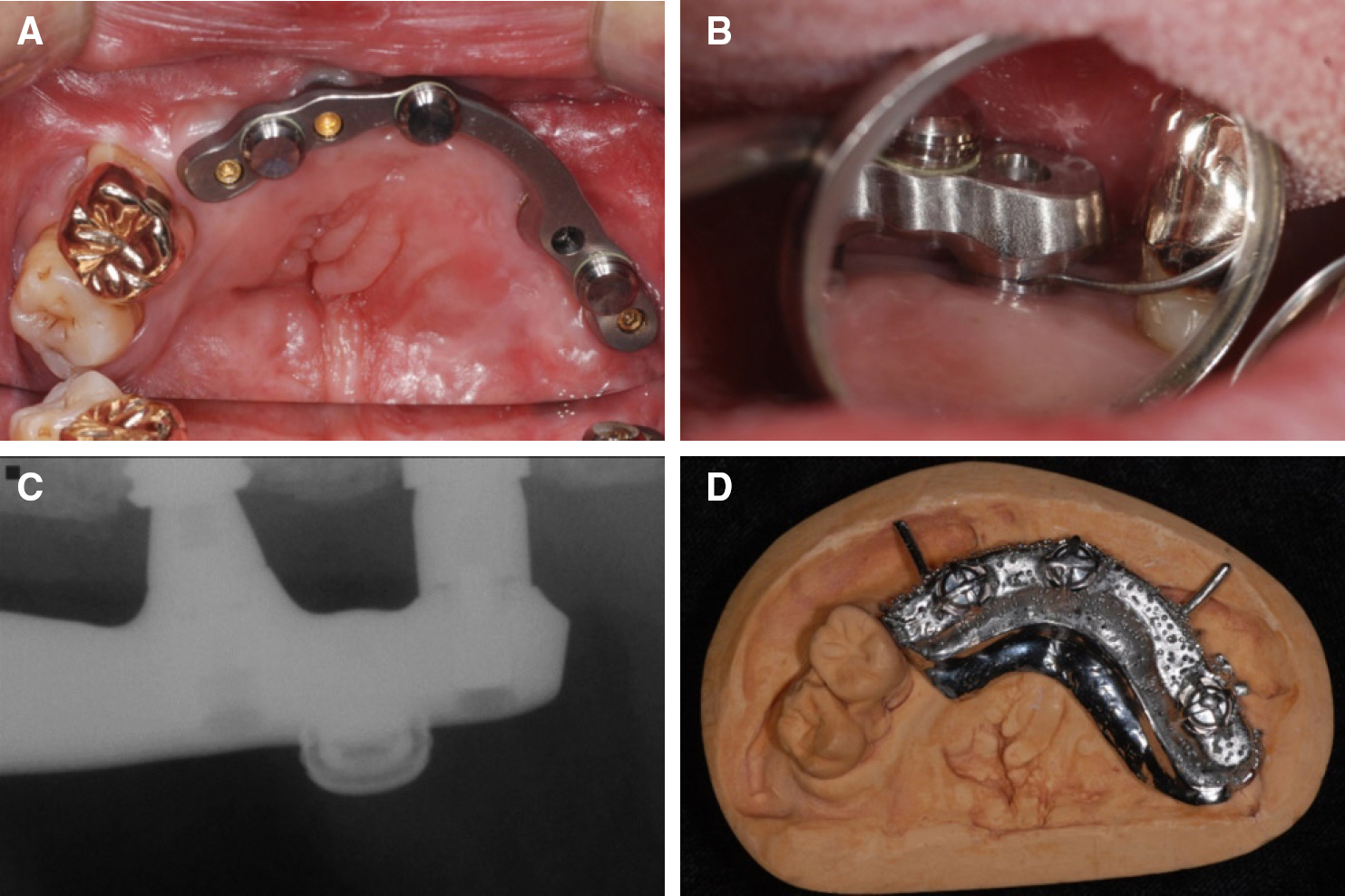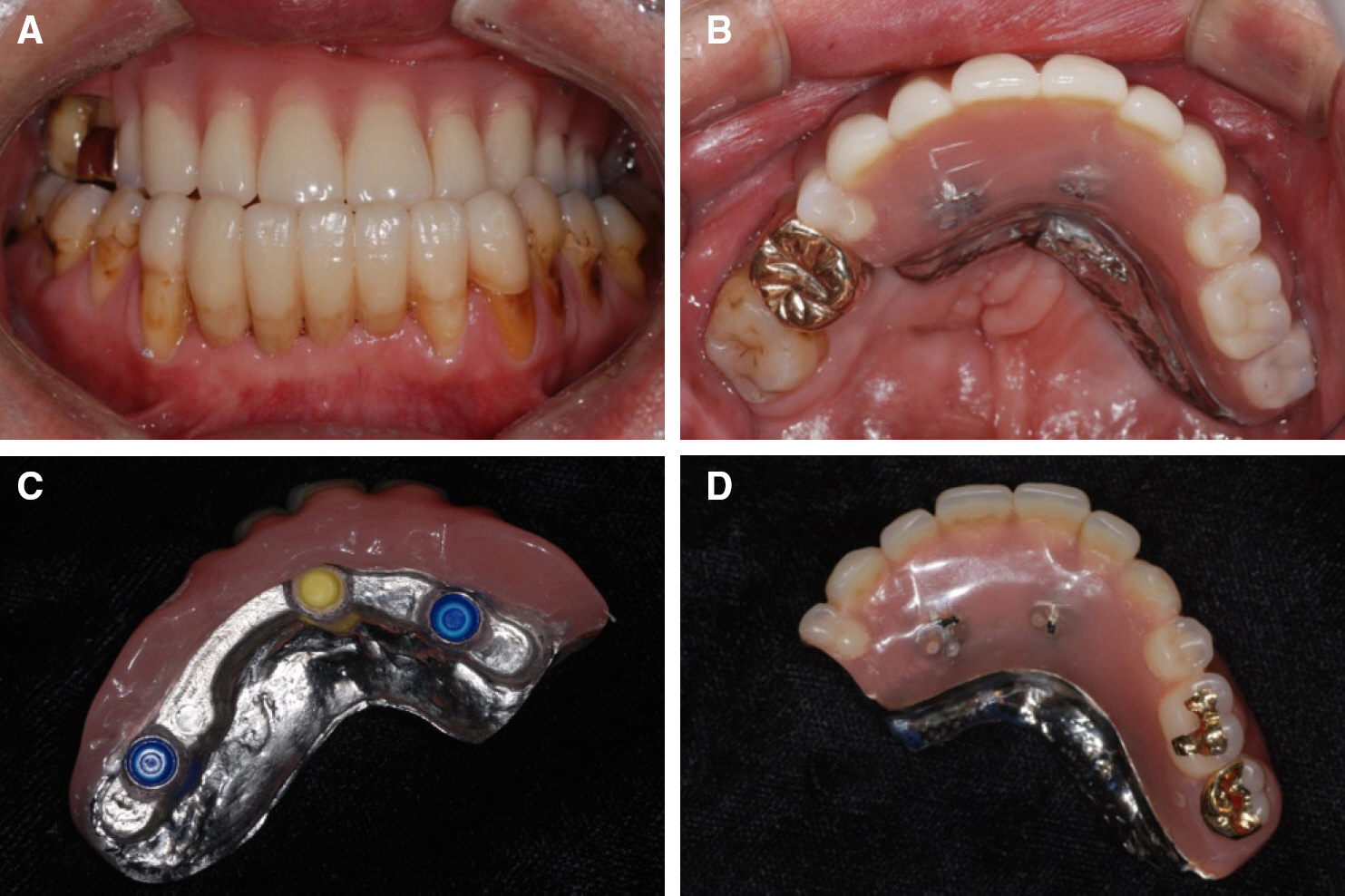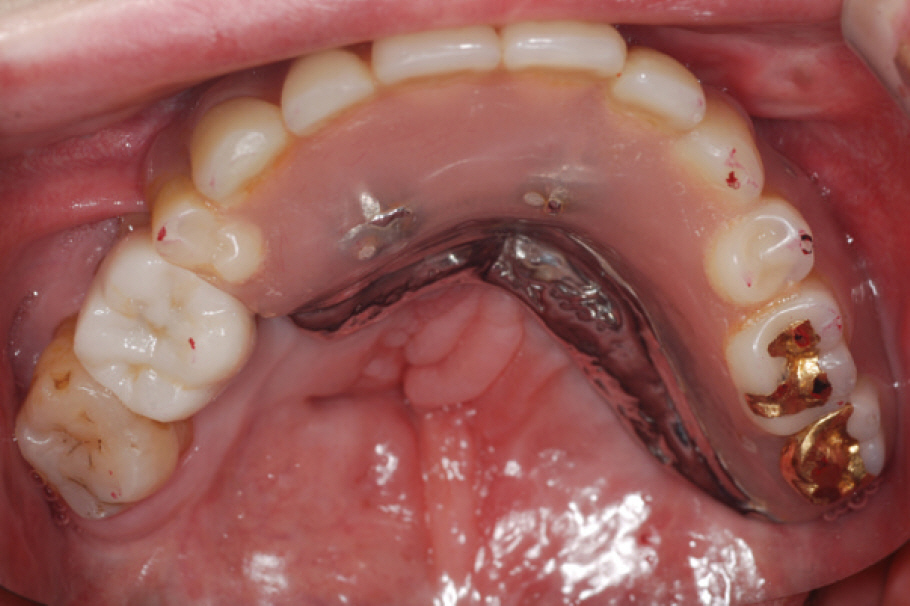J Korean Acad Prosthodont.
2015 Jul;53(3):207-214. 10.4047/jkap.2015.53.3.207.
Removable implant-supported partial denture using milled bar with Locator(R) attachments in a cleft lip & palate patient: A clinical report
- Affiliations
-
- 1Department of Prosthodontics, School of Dentistry and Institute of Oral Bio-Science, Chonbuk National University, Jeonju, Republic of Korea. jmseo@jbnu.ac.kr
- 2Department of Dentistry, School of Medicine, Eulji University, Daejeon, Republic of Korea.
- 3Department of Dentistry, Presbyterian Medical Center, University of Seonam College of Medicine, Jeonju, Republic of Korea.
- KMID: 2195250
- DOI: http://doi.org/10.4047/jkap.2015.53.3.207
Abstract
- Due to the limitations of conventional removable partial denture prostheses to treat a cleft lip & palate patient who shows scar tissue on upper lip, excessive absorption of the maxillary residual alveolar ridge, and class III malocclusion with narrow palate and undergrowth of the maxilla, 4 implants were placed on the maxillary edentulous region and a maxillary removable implant-supported partial denture was planned using a CAD/CAM milled titanium bar. Unlike metal or gold casting technique which has shrinkage after the molding, CAD/CAM milled titanium bar is highly-precise, economical and lightweight. In practice, however, it is very hard to obtain accurate friction-fit from the milled bar and reduction in retention can occur due to repetitive insertion and removal of the denture. Various auxiliary retention systems (e.g. ERA(R), CEKA(R), magnetics, Locator(R) attachment), in order to deal with these problems, can be used to obtain additional retention, cost-effectiveness and ease of replacement. Out of diverse auxiliary attachments, Locator(R) has characteristics that are dual retentive, minimal in vertical height and convenient of attachment replacement. Drill and tapping method is simple and the replacement of the metal female part of Locator(R) attachment is convenient. In this case, the Locator(R) attachment is connected to the milled titanium bar fabricated by CAD/CAM, using the drill and tapping technique. Afterward, screw holes were formed and 3 Locator(R) attachments were secured with 20 Ncm holding force for additional retention. Following this procedure, satisfactory results were obtained in terms of aesthetic facial form, masticatory function and denture retention, and I hereby report this case.
Keyword
MeSH Terms
Figure
Reference
-
1. Baek SH, Yang WS. Clinical study on the anomalies of number and morphology in cleft lip and palate patients'teeth. Korean J Orthod. 2001; 31:51–61.2. Galindo DF. The implant-supported milled-bar mandibular overdenture. J Prosthodont. 2001; 10:46–51.
Article3. Drago C, Howell K. Concepts for designing and fabricating metal implant frameworks for hybrid implant prostheses. J Prosthodont. 2012; 21:413–24.
Article4. Sadowsky SJ, Fitzpatrick B, Curtis DA. Evidence-based crite-ria for differential treatment planning of implant restorations for the maxillary edentulous patient. J Prosthodont. 2014; 22:319–329.
Article5. Kan JY, Rungcharassaeng K, Bohsali K, Goodacre CJ, Lang BR. Clinical methods for evaluating implant framework fit. J Prosthet Dent. 1999; 81:7–13.
Article6. Chan MF, Nä rhi TO, de Baat C, Kalk W. Treatment of the atrophic edentulous maxilla with implant-supported overdentures: a review of the literature. Int J Prosthodont. 1998; 11:7–15.7. Lewis S, Sharma A, Nishimura R. Treatment of edentulous maxillae with osseointegrated implants. J Prosthet Dent. 1992; 68:503–8.
Article8. Trakas T, Michalakis K, Kang K, Hirayama H. Attachment systems for implant retained overdentures: a literature review. Implant Dent. 2006; 15:24–34.
Article9. Watson CJ, Tinsley D, Sharma S. Implant complications and failures: the complete overdenture. Dent Update. 2001; 28:234–8. 240.
Article10. Naert I, Gizani S, Vuylsteke M, Van Steenberghe D. A 5-year prospective randomized clinical trial on the influence of splinted and unsplinted oral implants retaining a mandibular overdenture: prosthetic aspects and patient satisfaction. J Oral Rehabil. 1999; 26:195–202.
Article11. Wismeijer D, van Waas MA, Kalk W. Factors to consider in se-lecting an occlusal concept for patients with implants in the edentulous mandible. J Prosthet Dent. 1995; 74:380–4.
Article12. Oh SC, Han JS, Kim MJ. Implant supported overdenture using milled titanium bar with Locator attachment on fully edentulous maxillae: a case report. J Dent Rehab App Sci. 2011; 27:223–30.13. Kurtzman GM. Lab techniques for use of the locator attachment in bar-overdenture applications. TeamWork. 2008; 1:72–8.14. Kim MS, Yoon MJ, Huh JB, Jeon YC, Jeong CM. Implant overdenture using a locator bar system by drill and tapping technique in a mandible edentulous patient: a case report. J Adv Prosthodont. 2012; 4:116–20.
Article
- Full Text Links
- Actions
-
Cited
- CITED
-
- Close
- Share
- Similar articles
-
- Removable Partial Denture in a Cleft Lip and Palate Patient: A Case Report
- Implant-assisted removable partial denture using MilledBar and Attachment in partially edentulous maxilla: A case report
- An implant-supported removable partial denture for a patient with post-inflammatory scar contracture caused by burn complications: a clinical report
- Implant-assisted removable partial denture using milled bar and Locatorin partially edentulous maxilla: A case report
- Implant-supported milled bar overdenture with two implant surgical guides

